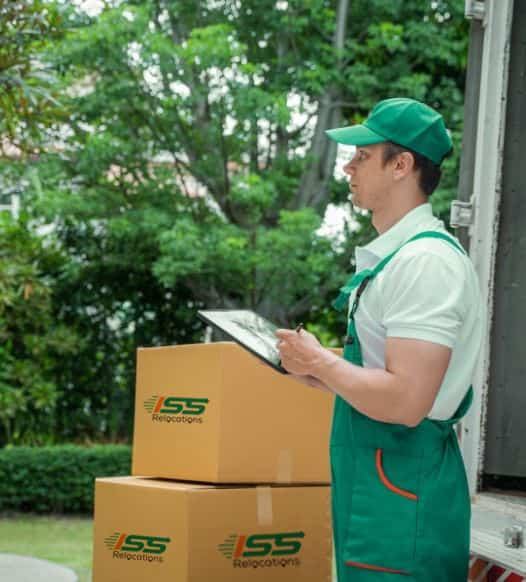
Moving with Kids: A Complete Guide for Smooth Relocation
Relocating to a freshly constructed residence is an important moment that could be both challenging and thrilling at the same time. When children involve themselves, the procedure of moving becomes significantly more complicated. Moving with kids depends on thoughtful preparation and thought with the objective of reducing stress and increasing pleasure for the entire family.
In this blog post, we’re going to take a look at essential guidance and strategies for moving with kids and the degree to which one is moving beyond town or to a new nation. From including your kids in the relocation process to safeguarding routines and handling difficult emotions, we’re going to provide useful insights and practical tips to help you manage the moving process with ease and confidence.
10 Tips & Tricks While Moving with Kids
1. Start Early
Get started getting your children prepared to make their new surroundings as soon as possible. Continue to keep open lines of communication about the relocation and involve them in the process from the start to make them feel influential and informed.
When moving with kids, it is extremely important to get started training them early. Provide them ample warning, particularly a few months ahead of time. Talk to them about moving abroad with kids, why you’re relocating, as well as what their new home/school/neighborhood will be like. Involve your kids in the relocation procedure by having them pack treasured possessions or make arrangements for their new bedroom. This enables them to get used to the change and become thrilled.
2. Maintain Routine
The maintenance of a sense of regularity between the pressure of moving may provide stability and comfort to children. Throughout the relocation process, attempt to keep up regular routines for meals, bedtime, and activities.
Make an effort to keep your children’s routines consistent prior to, throughout, and after the move, which includes bedtime, mealtimes, nap patterns for kids who are young, and so on. Putting together a plan for moving day and the first few weeks might also be advantageous. Kids thrive on routine, which provides comfort and familiarity while everything else fluctuates.
3. Pack Together
Make room for your children to pack their belongings and choose regardless of the elements they want to bring to the new home. This offers people with an impression of ownership as well as authority over the things they own.
Consider moving a family effort; go through items and belongings together to select what should be packed. Allow children to make their own customized moving day boxes incorporating what they like best. Gathering familiar items that need to help kids recognize the significance of moving.
4. Address Emotions
Take responsibility for as well as validate the reactions of your kid’s feelings regarding the move. Assist them in communicating how they’re feeling and encourage them that it’s appropriate to feel excited as well as nervous about addressing change.
Acknowledge and encourage your children’s emotions about the move, whether they are excited, upset, or anxious. Implement tactics such as reading books about movement, recording your emotions, and diffusing essential oils that promote happiness. Discuss particular concerns they have.
5. Explore the New Neighborhood
Take your kids on an adventure across the new neighborhood before you move. Visit parks, schools, and community centers in order to help them become more acquainted with the new environment and feel more comfortable about the move.
Take your kids back to their new community before move-in day to explore together. Visit their new school, as well as nearby parks and libraries. Building familiarity can minimize fear while offering concrete instances of what their new town has to offer.
6. Stay Positive
Maintain an optimistic mindset about the move, even if you feel overwhelmed or anxious. Children occasionally receive cues from their parents, so expressing optimism and enthusiasm might help allay their fears.
Conversations about the move should focus on the positive aspects, which include meeting new individuals and discovering new places. Don’t stick around on the negatives. The way you behave will influence the kids you have. Exude happiness and trust that the journey will be full of surprises.
7. Create a Moving Day Plan
On a moving day, have a plan put together to keep your kids safe and entertained. Put together childcare or enlist the support of family and friends to look after the children while you concentrate on moving logistics.
Make a plan for the day of the move, considering when you’ll start, who will do what, what equipment you’ll need, childcare facilities, and transportation for pets. Schedule breaks to avoid feeling overwhelmed. Give these individuals small, attainable tasks that will make them feel encompassed. Communicate the plan to alleviate concern over the unknown.
8. Set Up Their Space First
As soon as you get settled at your new home, set up your kid’s bedrooms and play areas initially. Having comfortable spaces ready for them is going to help kids feel more at ease in the unfamiliar environment.
On a moving day, unpack the kids’ rooms first to make sure that their new home is quickly organized. Having familiar items that need to be set up right away indicates home as well as offers comfort. Encourage them to help with the decorating as well. Surround them with all of their favorite toys, books, and artwork.
9. Get Involved in the Community
Encourage your kids to get involved with local celebrations and organizations so that they can make new acquaintances and become attached to their new town. This may encompass sports teams, art training sessions, or scouting organizations.
Once situated, get your kids engaged with the new community straight immediately, visiting libraries, recreation centers, clubs, sports teams, and places of religion. Choosing new friends and figuring out activities that they enjoy will help them adjust to this new era of life.
10. Be Patient
Be compassionate with your kids while they adapt to the changes. Acknowledge that it might require an extended period for them to feel perfectly settled in their new residence, offering support and reassurance as required.
Acknowledge that uprooting and altering are difficult at any age. Your kids may experience overwhelming feelings of worry or act out. Support them throughout this period of transition, seek assistance if it’s needed, and give them plenty of time for adjustment. With patience and care, families can thrive even after significant relocations.
Moving with kids presents difficulties, but with careful planning and consideration, it can additionally offer opportunities for growth and new experiences. By including your children in the process, maintaining routines, and reinforcing a positive attitude, you could be smooth.
Conclusion
Moving with kids is a massive life event that calls for careful preparation, patience, and understanding. Throughout the relocation process, it’s critical to emphasize your children’s mental well-being and help them acclimate to their new home. You could assist kids in adjusting to their new environment with greater ease by involving them in the moving process, establishing routines, and cultivating a positive attitude.
Remember that every kid may react uniquely to the transfer, so be gentle and kind as they go through this huge transition. Encourage open communication, affirm their emotions, and reassure them that they are being supported throughout the process.
Plan Stress-free Move with Top Moving Company in UAE - ISS Relocations

Frequently Asked Questions
Which country is best for moving with kids from UAE?
Countries like Canada, Australia, Denmark, and Switzerland offer excellent education, healthcare, and family-friendly environments. ISS Relocations provides tailored relocation services to ensure a smooth transition for families moving abroad with kids.
How does moving abroad affect a child?
Moving abroad can be both exciting and challenging for children. They may face emotional stress due to leaving familiar surroundings but also gain exposure to new cultures and opportunities. ISS Relocations helps families adjust by ensuring a stress-free relocation process.
What age is hardest for kids to move?
Children aged 6-12 may struggle the most with relocation as they have established friendships and routines. Teens can also find it challenging due to social circles. ISS Relocations offers guidance on settling kids into new schools and communities for a smoother transition.
What is the best age to move with kids?
The best age to move with kids is typically before they start school or during early childhood. Younger kids adapt more easily to new environments. ISS Relocations provides expert support to minimize disruption and help children settle into their new home.
Can I move abroad with my kids?
Yes, but you must comply with legal requirements, including custody agreements and visa regulations. ISS Relocations assists with documentation, school enrollment, and housing to make moving abroad with kids stress-free and legally compliant.
What is the ideal age to move abroad?
The ideal age depends on individual circumstances, but moving before kids reach middle school can make the transition easier. ISS Relocations helps families plan their move at the right time for minimal disruption to education and personal growth.
Is moving around good for kids?
Moving can be beneficial as it exposes kids to different cultures, languages, and experiences, fostering adaptability and resilience. ISS Relocations provides specialized family relocation services to ensure children have a positive moving experience.
Moving Company - Recent Blog
Stay informed and prepared for your next move with our latest blogs on moving services in the UAE. From expert packing tips to international relocation guides, ISS Relocations brings you up-to-date insights to make your moving experience smoother, safer, and stress-free.










